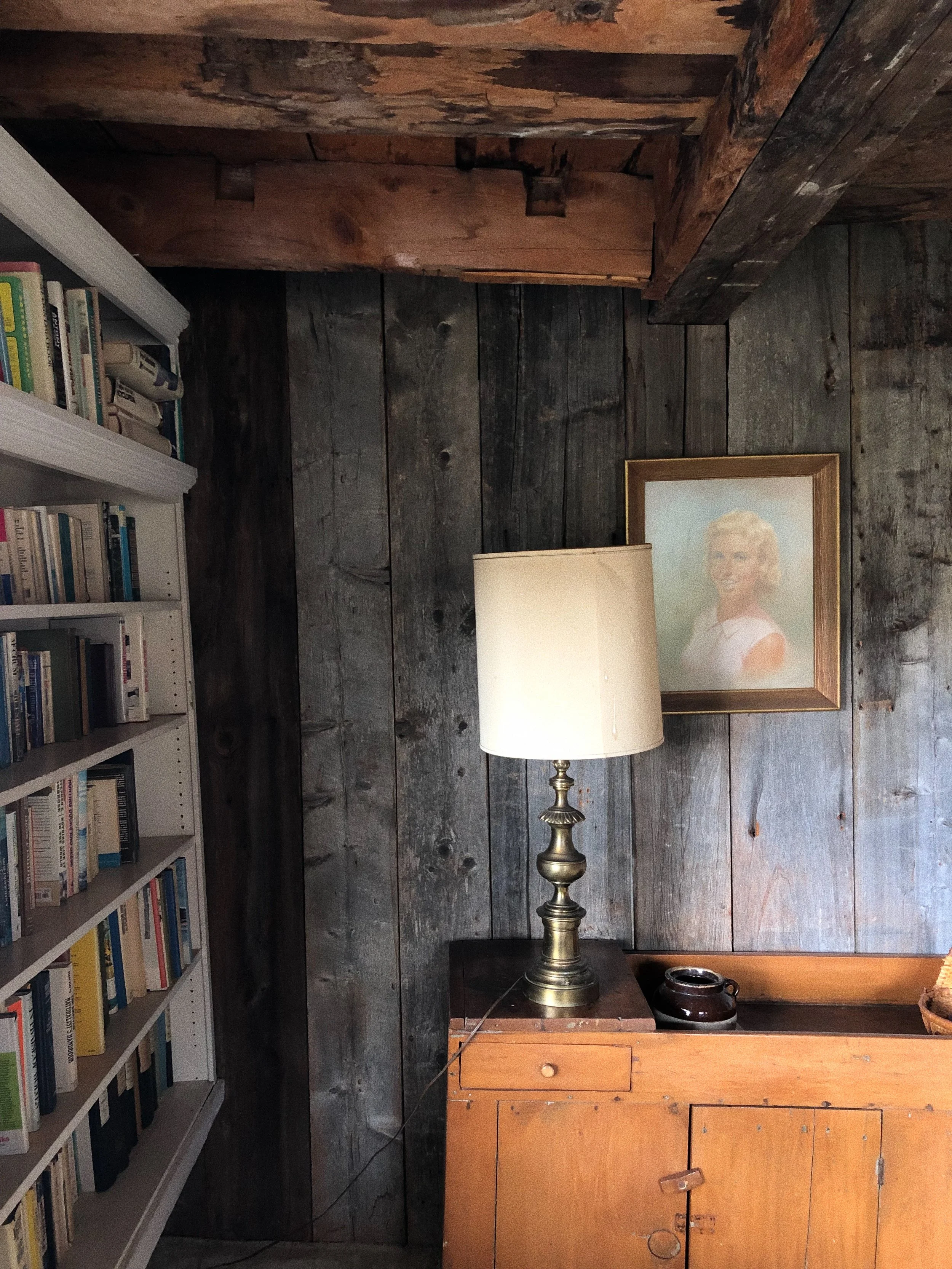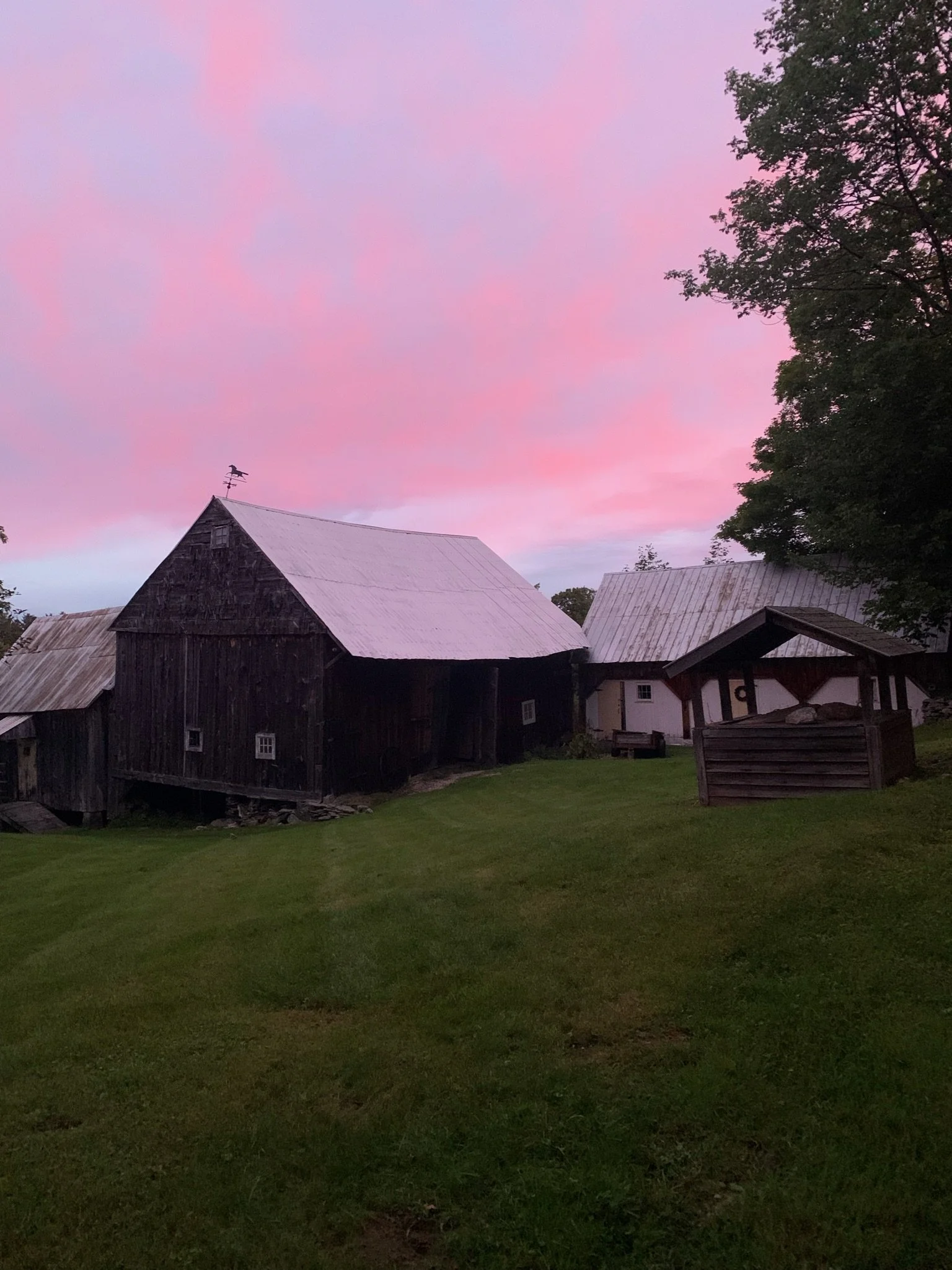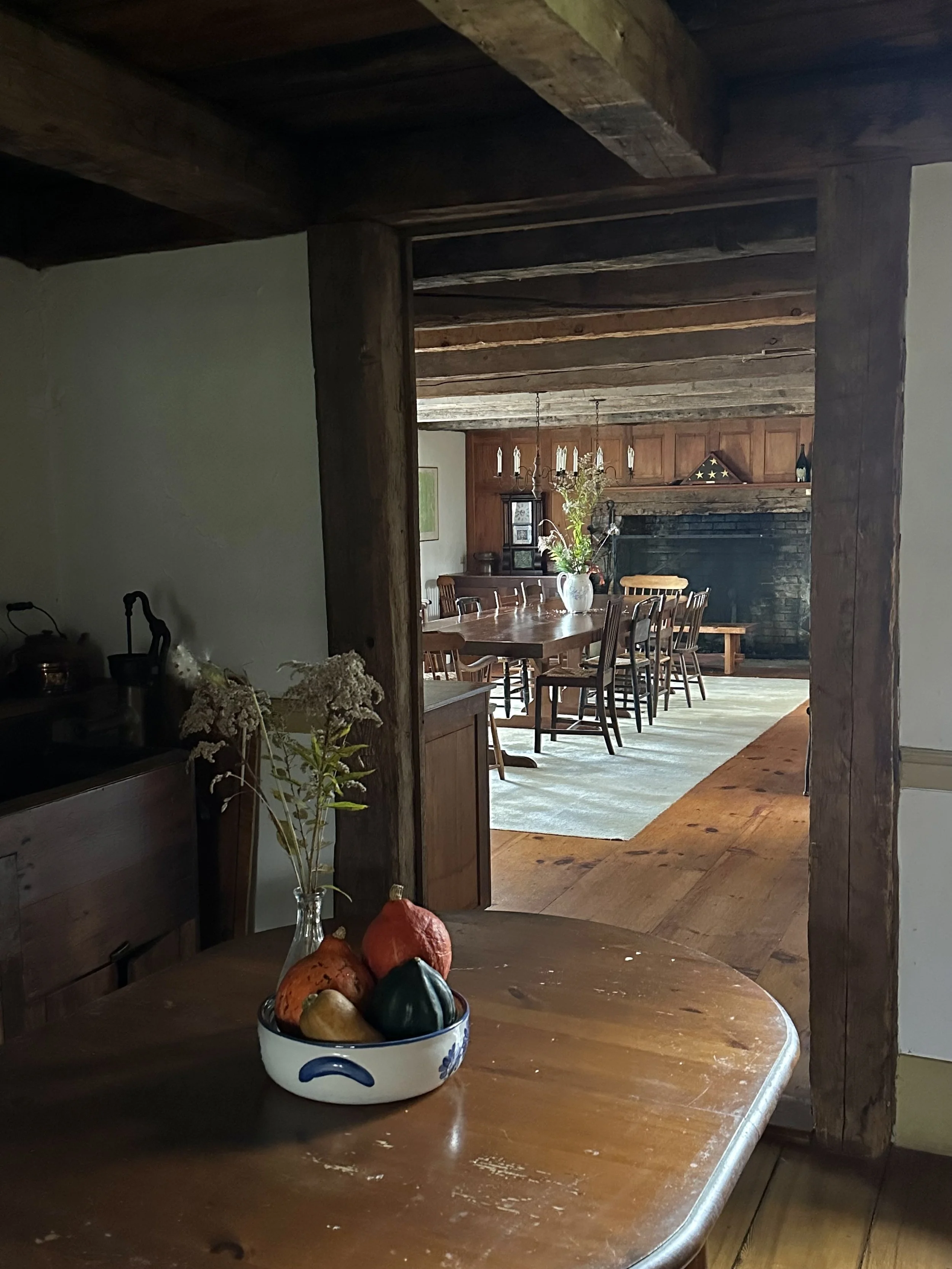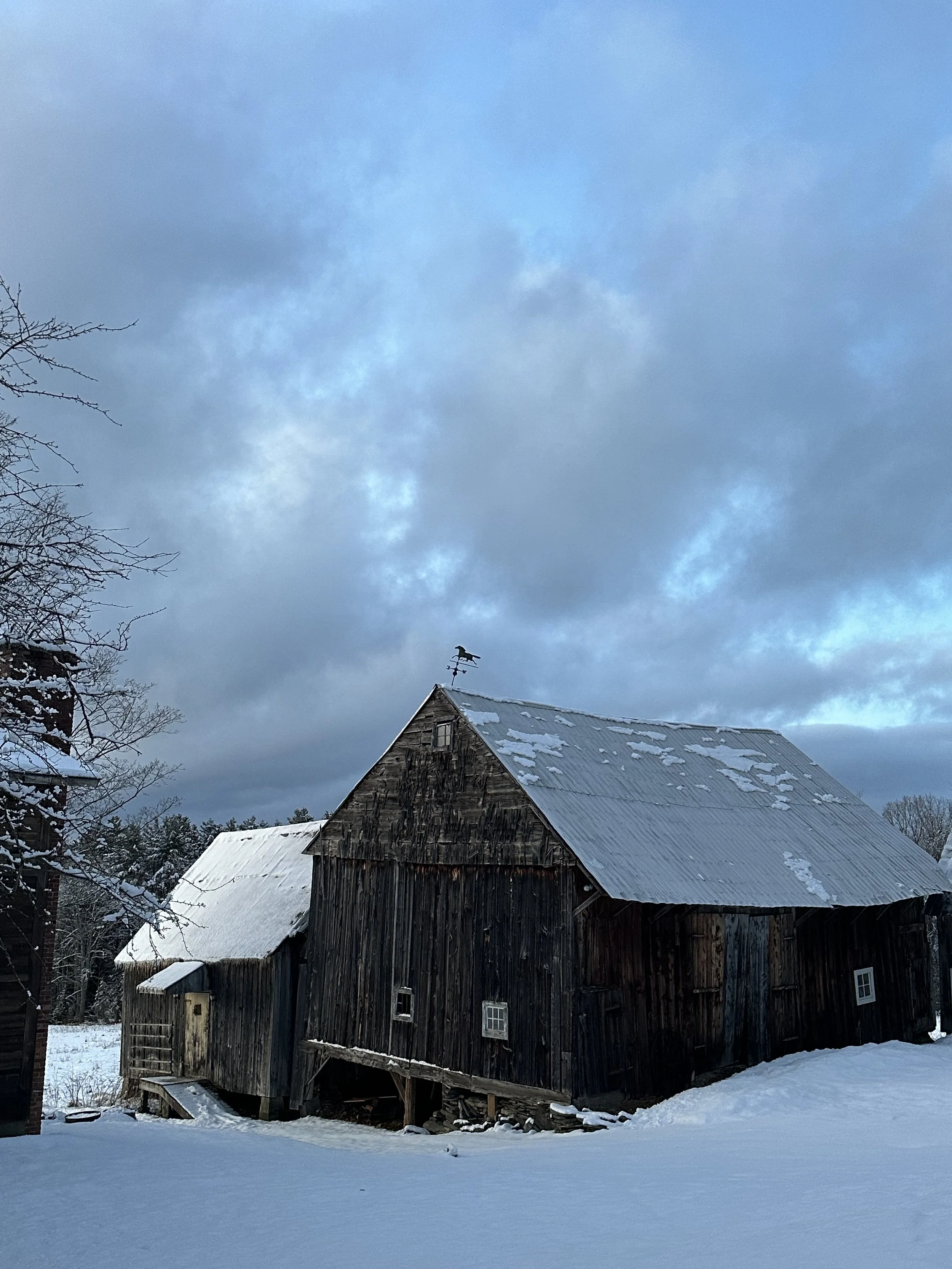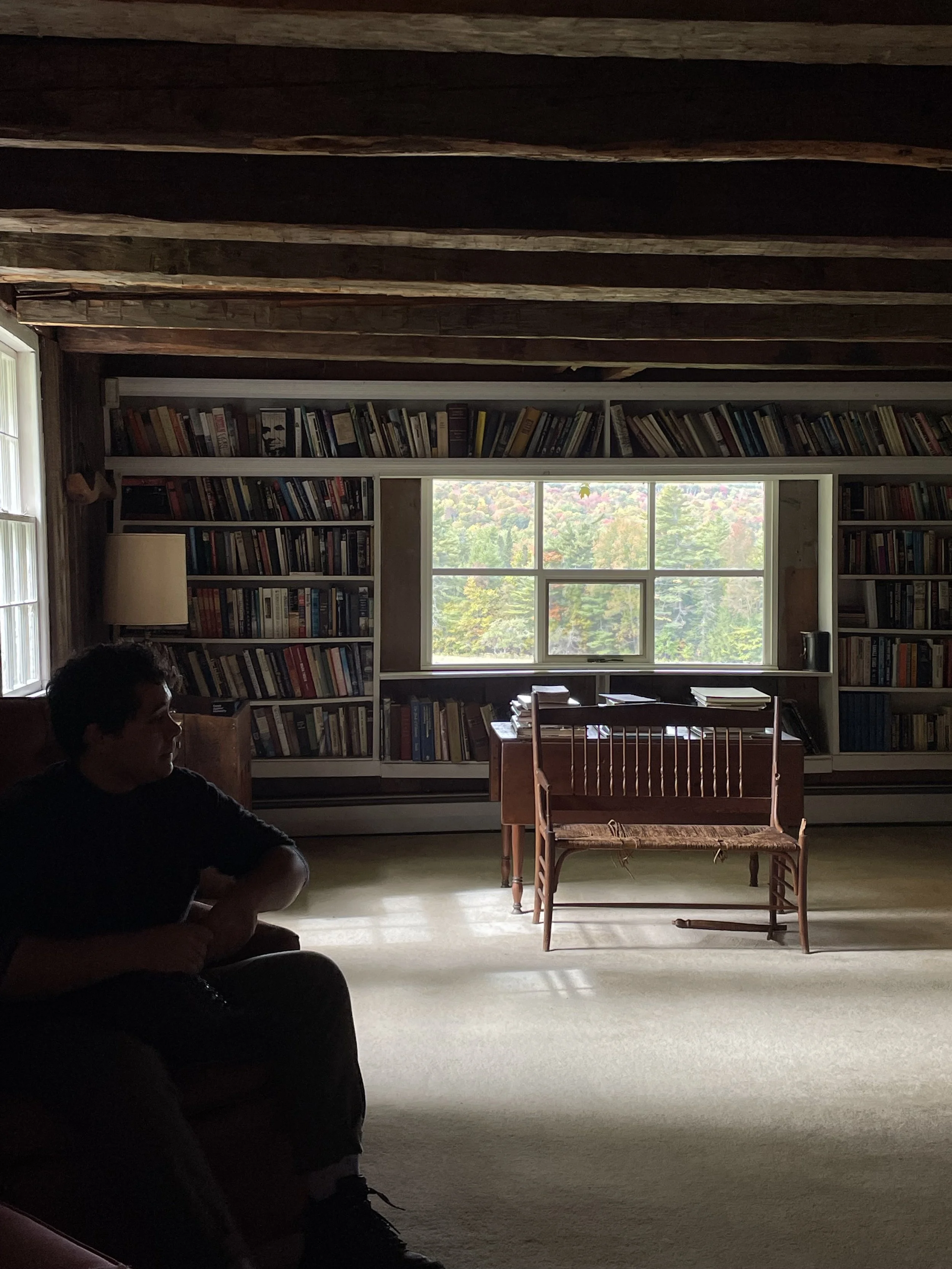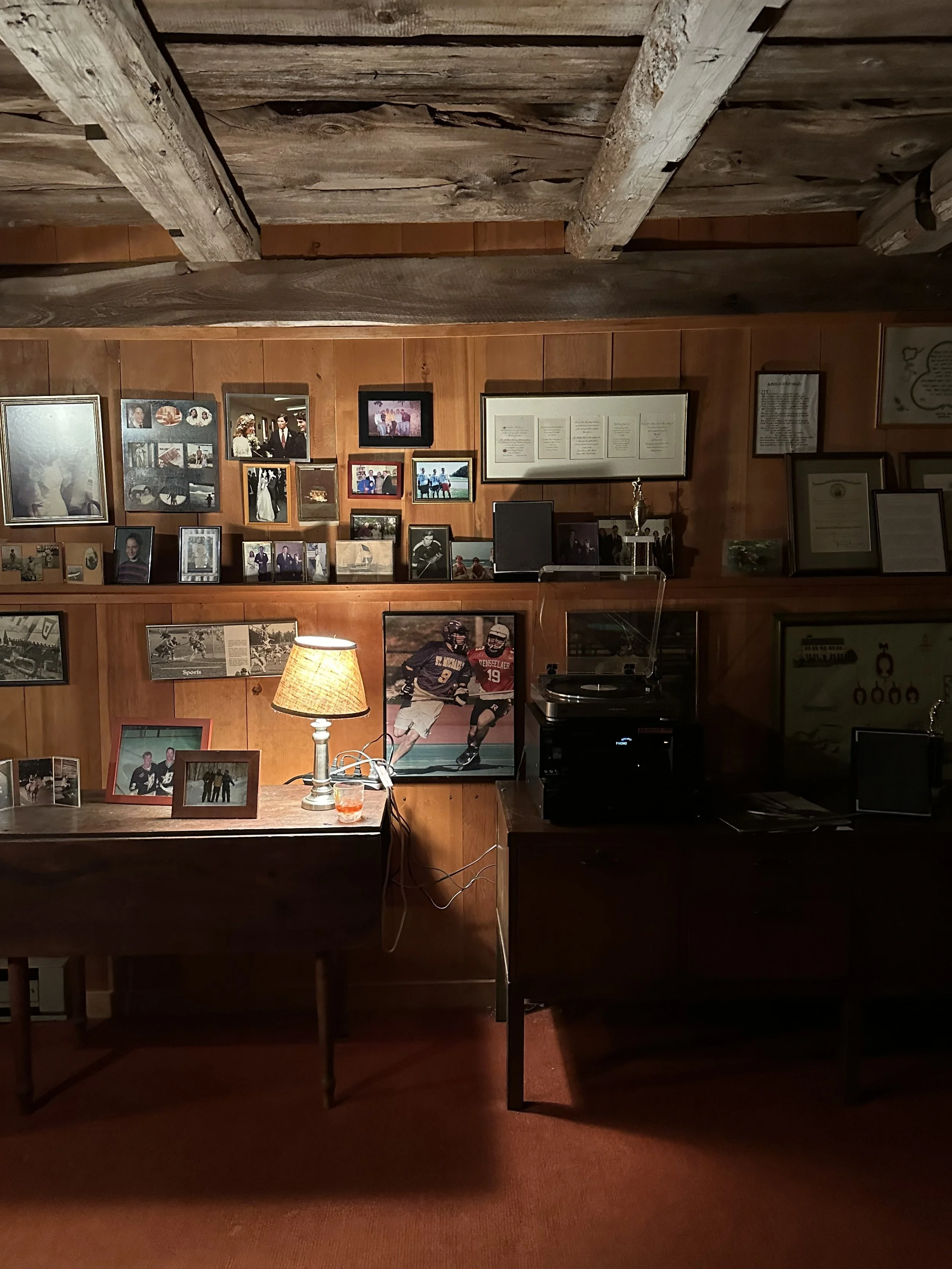Welcome to
Blind Mare Meadow Farm
When visitors arrive at the farm, their first question is often: “How old is the house?” The honest answer is, we’re not entirely sure. What we do know is that the foundation was laid sometime before 1800, and the great English-style barn behind the house — built with chestnut beams — is just as old.
What we also know is that this land has held only three families in more than two centuries. Each left their mark: the Chapmans, who carved a life out of the Vermont wilderness in the late 1700s; the Pratts, who endured the lean years and raised generations here; and finally the Birminghams, who stumbled upon the old farmhouse in the 1960s when it was little more than a ramshackle relic with a car leaning against the front door.
The story of the farm is, in many ways, the story of Vermont — from Revolutionary War settlement, through natural disaster and economic hardship, to abandonment, and rediscovery.
The Chapman Years (1788–1817)
1788: Reuben Chapman, his wife Rhoda Peck, their two toddlers, and Rhoda’s brother Daniel Peck with his wife Abigail bought this land. Together they cleared towering old-growth trees, built cabins, and planted crops.
The Chapmans had six more children before 1800, the Pecks five. Life was hard: grinding wheat into flour, hand-sawing 100-year-old trees, raising infants in the wilderness — all in a much colder climate than Vermont today.
The children grew up, married, and mostly remained nearby in Cavendish.
In April 1816, Reuben sold part of the farm — and even a section of the house — to his son Sceva. That same year, a massive volcanic eruption in Indonesia darkened skies worldwide. In Vermont, snow fell in June and frost killed crops in May and again in late June. Scarcity made food prohibitively expensive.
By 1817, Reuben had had enough. He sold the farm to Luther Pratt, and in spring 1818, loaded two wagons and set off for Ohio with his entire family.
The Pecks stayed behind. The parting must have been painful after three decades of building a life together. One day, the wagons simply rolled down the road past the Pecks’ house and disappeared.
The Pratt Years (1817–1962)
1817: Luther Pratt and his wife Susanna became the new owners. They likely shifted the farm toward sheep in the 1820s, when Vermont was nearly clear-cut to make way for merino wool pastures.
The farm stayed in the Pratt family for nearly 150 years: from Luther to his son Luther Jr., then to Luke Pratt in the mid-1800s, and finally to Luke’s son George.
By the late 1800s and early 1900s, Vermont’s small farms were declining as mechanized agriculture took hold out West. The Depression of the 1930s emptied much of the countryside.
George Pratt (born 1886) inherited the farm. He seems to have lived there sporadically in the 1930s. His wife Ella and her sister Laura kept the house through the 1940s. Records after that become hazier, but by the 1950s the farmhouse was largely empty.
The Birmingham Years (1962–Present)
In the early 1960s, Matthew and Jane Birmingham, Sam’s grandparents, would pile their kids into the car in Connecticut and drive north to Vermont.
They fell for Okemo Mountain in Ludlow and began looking for a ski house. After years of searching, realtors grew frustrated until, half in jest, one drove them up a rutted dirt road to a ramshackle farmhouse — abandoned for a decade, with a rusted-out car crashed against the front door.
To everyone’s surprise, that was the one. Jamie’s father bought the house and 20 acres from George Pratt in 1962.
And so, after the Chapmans and the Pratts, the Birminghams became only the third family to call this farm home in its 237-year history.
For over sixty years, the Birminghams have only added to the property. Not just bedrooms, a shed, and a dining room, but to the land and the memories that it holds.
Sam’s father, Jamie, and his siblings Matt, Bonnie, and Peter — Generation One — spent much of their formative years in Cavendish. Many of Generation Two — their children — have done the same. Both have had countless dinners, lacrosse and soccer tournament weekends, ill-advised parties, surprise birthday parties, late night-fires, and pool games.
Sam’s uncle, Matt (Spike) Birmingham was responsible for petitioning the town of Cavendish to grant the name of the winding dirt lane, Birmingham Road.
In 2020, Catie Birmingham, Sam’s sister, married Dylan Conway in an intimate ceremony with home-cooked food and locally-picked flowers.
